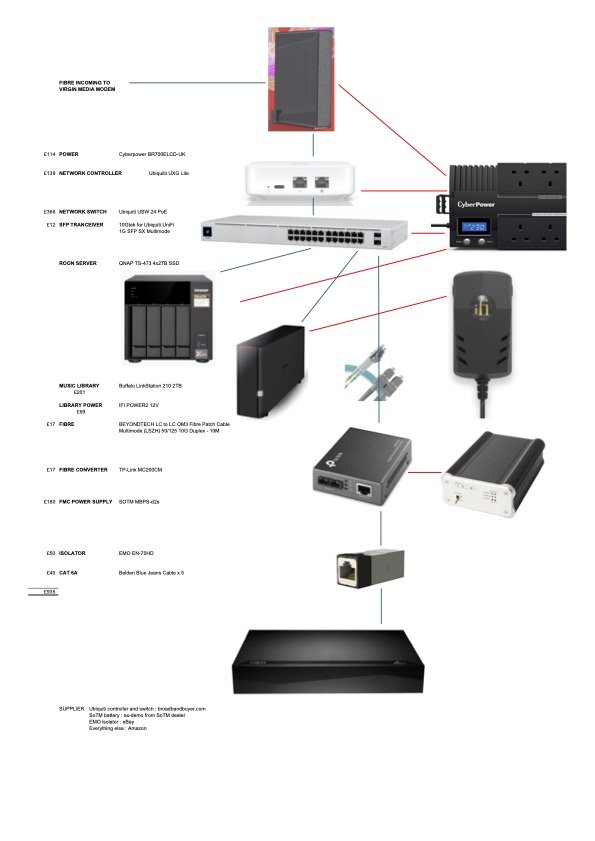At the time of testing, my system was (still kinda is...) Ethernet only.
Our external line is fiber, but our provider uses an ONT box to convert optical to Ethernet since the stock router is Ethernet input only.
The funny thing is that the router has an SFP output, which I have used when I had the SW10 and SW6 feeding either one with mixed results.
That could have been the effect of that particular SFP use case though.
Bridging the two switches via fiber was definitely much better than having them connected via Ethernet, but in my use case it was not possible to effectively determine if that was due to bridging the switches or due to the effects of fiber alone or even both.
Using either switch on its own or both switches bridged and connected via fiber instead of my PhoenixNET plus SOtM isolator combination was still not as good (less natural...not as ease-full...).
Using either switch just after my router, instead of the non-audio switch I use, was certainly "better" but not enough to justify an upgrade but I guess the effect of having the above mentioned combo after either switch must not have been insignificant either.
However, both switches performed very well.
In comparison with a stock SOtM sNH-10G (no clock upgrade - fed by an sPS-500) the SW6 was clearly better on all aspects.
LHY audio have also released an FMC unit which is also very interesting:
https://www.beatechnik.com/fmc and I'd like to give that a spin too.
My layman's take on all this is that we are in a transitioning period and the right blend of noise reducing technologies is not yet offered as a complete package.
And while Ethernet filters do a lot for reducing noise affecting the timbre of music, switches do the same for dynamics, bass and physical presence, with fiber providing clarity and speed and better clocks transparency and flow.
So, one would still have to experiment with optimal solutions according to their particular use case.


